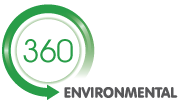Animal By-Products
Categories
There are three categories of waste which determine the method of handling and disposal.
- Category 1 – highest risk that includes material infected with disease such as BSE and material containing high levelsof drug residues eg zoo animals.
- Category 2 – generally fallen stock but the default position where the materials is not classified at Cat 1 or 3.
- Category 3 – material that is fit for human consumption, so generally meat related waste from food manufacturers, retailers, kitchens etc.
EU Regulations define what should be included in each Category (Articles 8, 9 and 10)
Are you affected?
Any business that has meat waste – other than in catering waste – is affected by the Animal By-Products Regulations.
For the majority of businesses, there are basically two levels of Animal By-products that MUST be disposed of using treatment or incineration and which CANNOT be disposed of to landfill.
Retail waste – all raw meat and fish waste from retailers is covered and includes smoked salmon, raw eggs, lightly cooked meat and sushi. Guidance on how food waste should be managed is shown here.
Food manufacturing – all raw meat and fish and bakery products or waste that has been in contact with raw meat is covered. This provides clear guidance on what is required.
Businesses transporting ABP are not required to be registered as Waste Carriers. However, they are required to register with Defra’s department of Animal Health using a registration form. This also applies to any business that generates, handles, processes, stores, places on the market, distributes, uses or disposes of ABPs or derived products. Details for this are on GOV.UK.
A business that transports ABP waste must also carry documentation that shows the following:
- a detailed description of the contents, including category and quantity
- the date of transport
- an address of origin and destination, and contact names at both
- approval or registration numbers for the factory or vehicle
- the signature of whoever is responsible for the contents
- ear numbers and details of species, where carcasses have been taken from farms
You should keep a copy of the commercial document for at least 2 years.
PLEASE NOTE THAT THE REGULATIONS ALLOW RETAIL AND FACTORY PREMISES PRODUCING LESS THAN 20KG’S PER WEEK OF RAW MEAT AND FISH WASTE TO DISPOSE OF IT TO LANDFILL. This is mentioned briefly at the bottom of GOV.UK Guidance.
What is required?
Catering waste is defined as ‘all waste food including used cooking oil originating in restaurants, catering facilities and kitchens, including central kitchens and household kitchens’. This does NOT include sandwich making kitchens which are covered in the same way as food manufacturers. Catering waste can include raw meat such as unused sausages or steaks. Catering waste can still be disposed of to landfill.
Retail waste includes all products other that waste from an on-site restaurant which is classed as catering waste. Any raw or lightly cooked meats or raw eggs are covered and must be separately collected for disposal through incineration, rendering or composting. This includes the packaging around such products.
Food manufacturers of meat based products must dispose of all raw and cooked meat waste or any products that have been in contact with them through rendering, incineration or composting.
ABP waste must be stored in separate containers marked ‘not for human consumption’ and ‘category 3 material’ and should only be collected by someone you know will be taking it for an approved process. It is the waste producers responsibility under Duty of Care to ensure they know of the route and premises for disposal.
It is prohibited to feed ABP waste to livestock.
It is still possible to feed food waste to livestock but NOT food waste that has come from catering facilities or contains – or has been in contact with – any meats or fish. There is a government leaflet that describes the requirements clearly.
